Original WWII Invasion of Sicily and Italy 1st Edition Allied Bombing Navigators Air Map

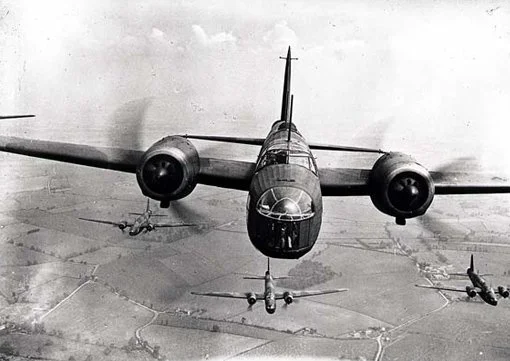

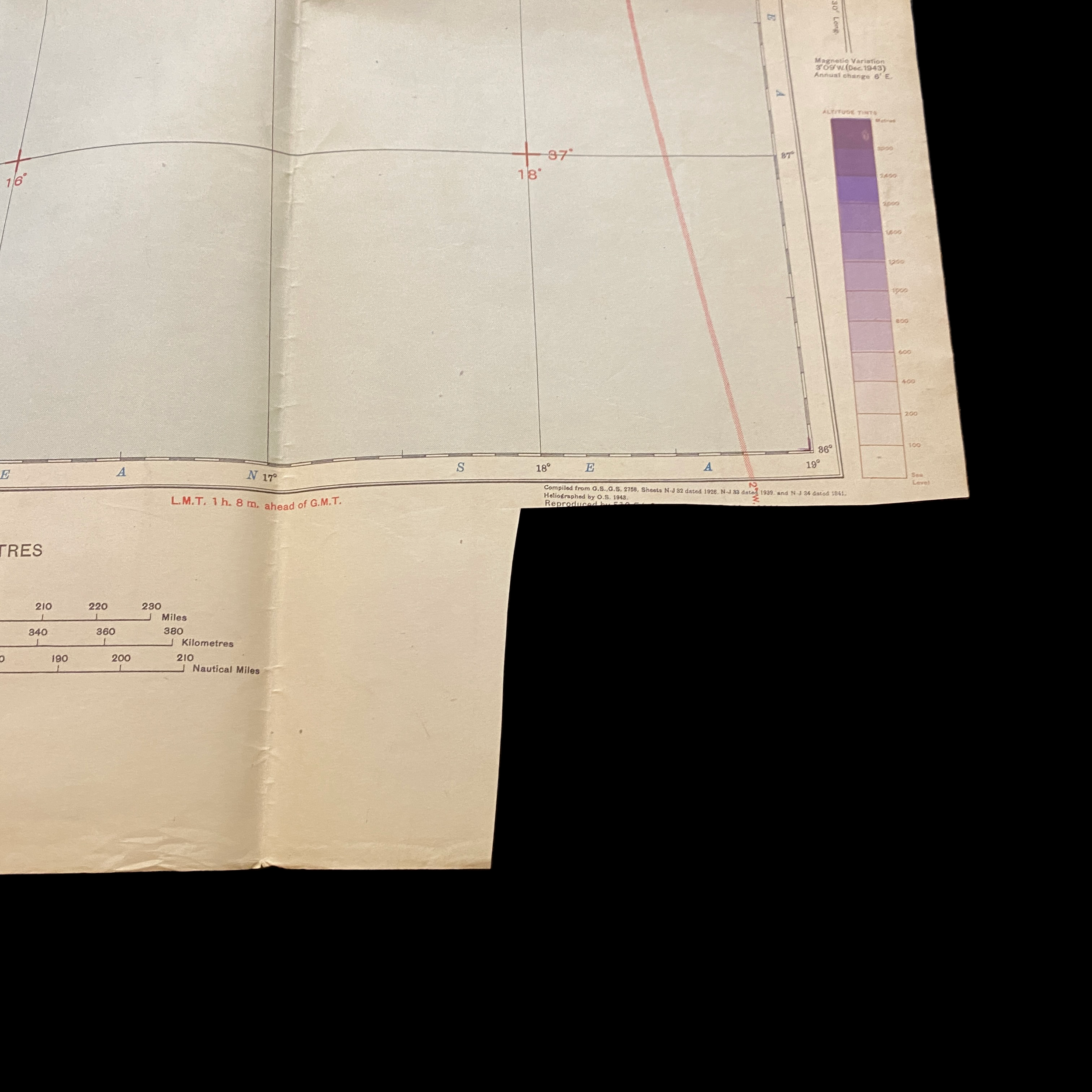








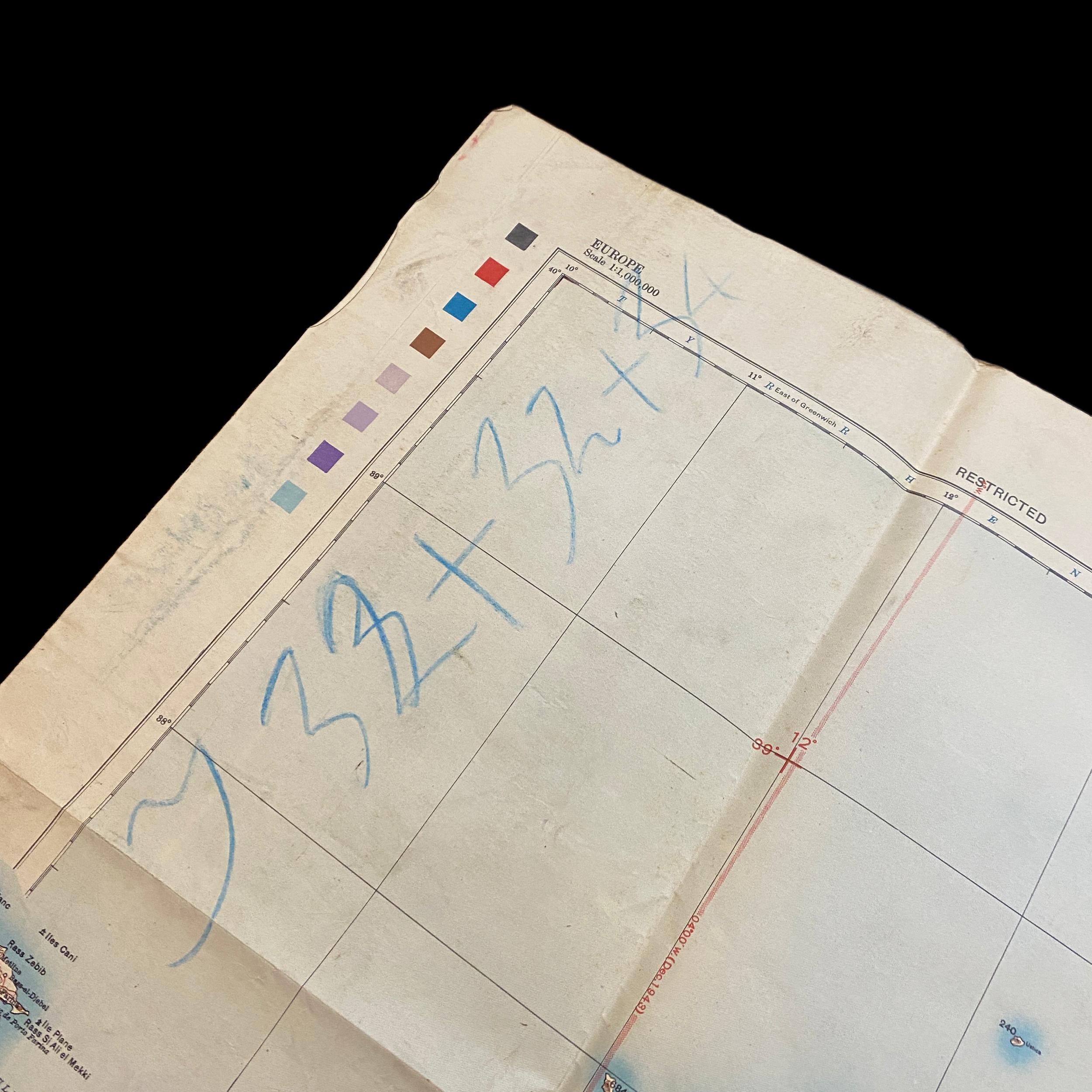
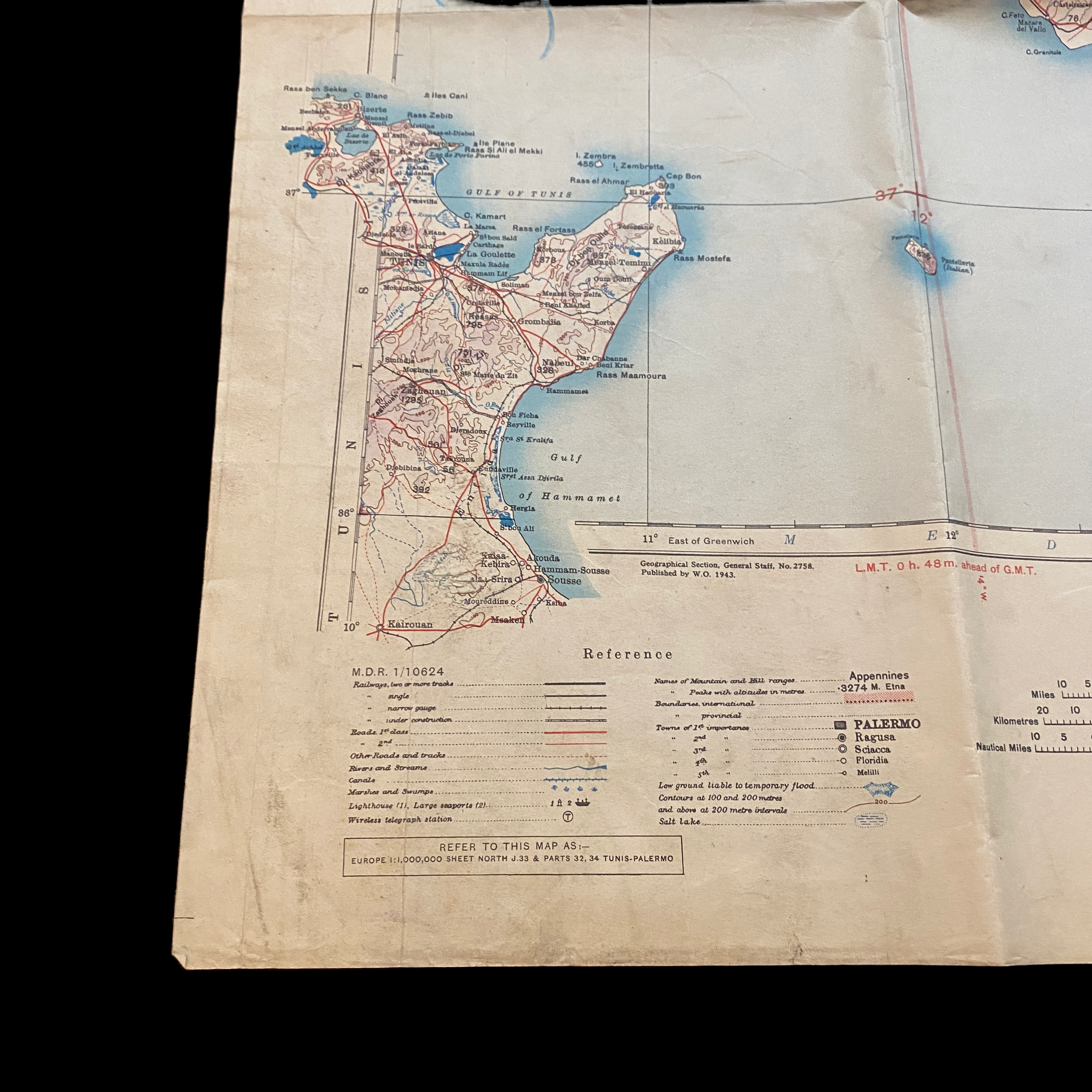
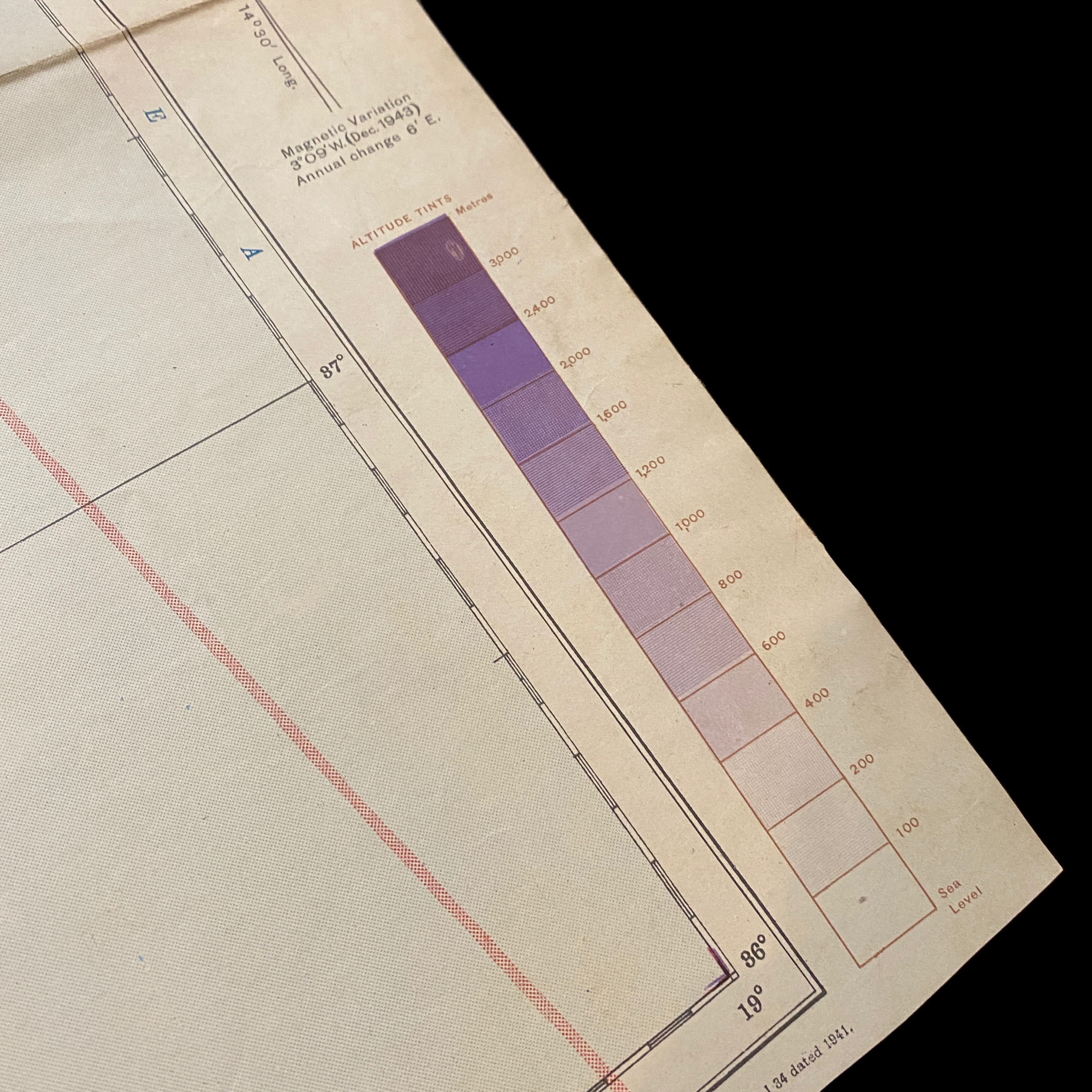

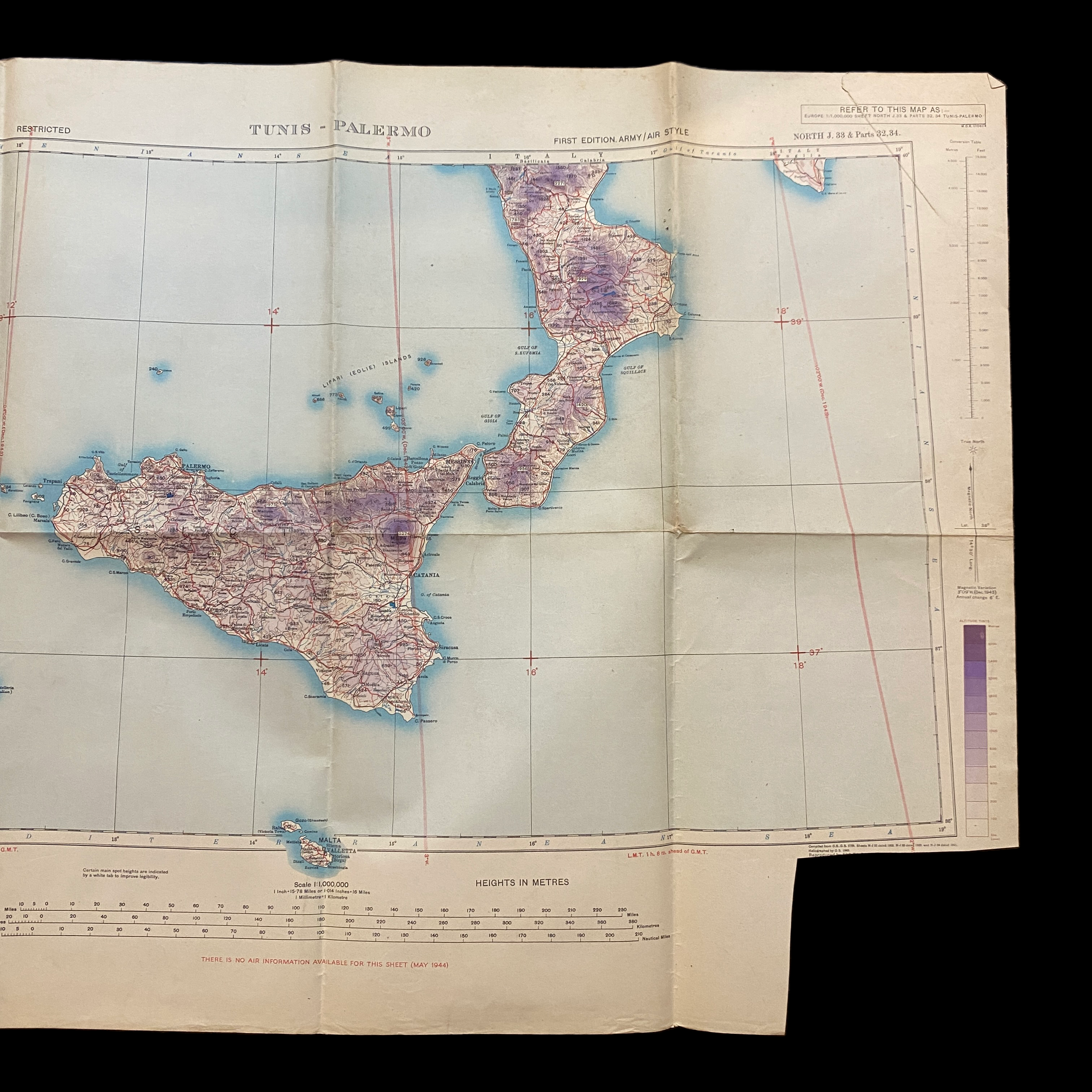
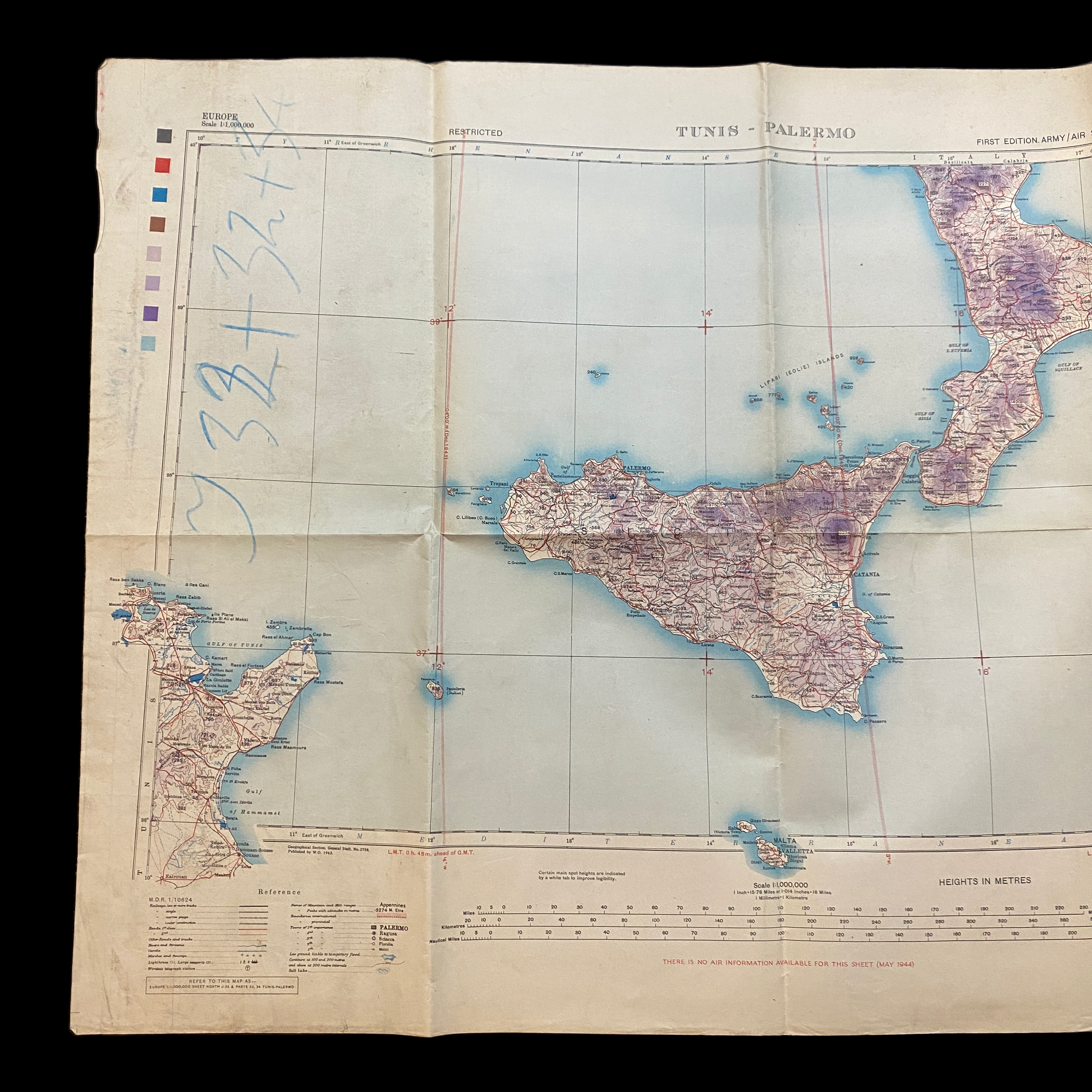
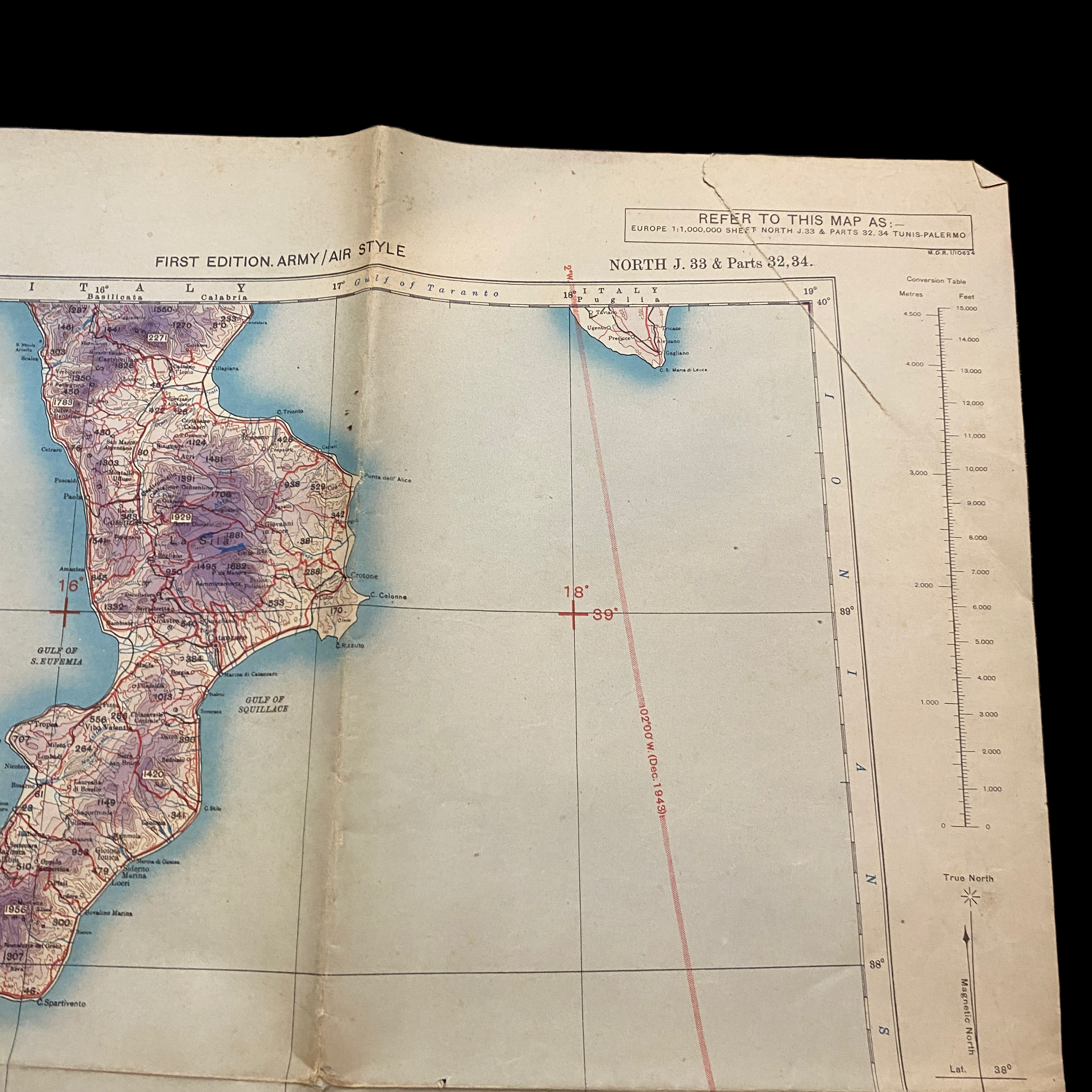
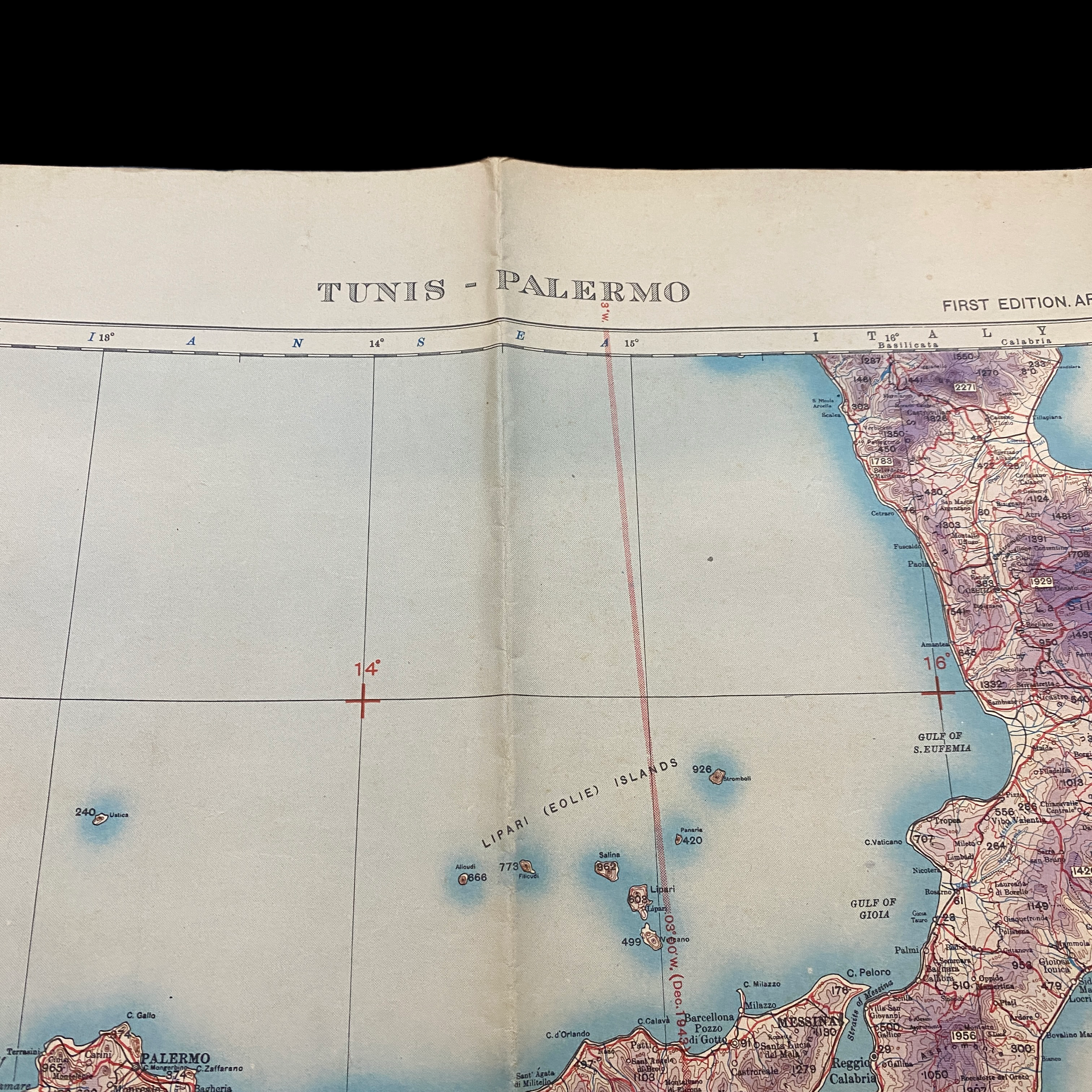
Original WWII Invasion of Sicily and Italy 1st Edition Allied Bombing Navigators Air Map
Comes with hand-signed C.O.A.
This incredible and museum-grade WWII original Allied air map was used by Allied bombing crew navigators in the Italian Theater of Operations.
While the strategy of the Italian Campaign was never very well defined (it was conceived partly to draw German forces away from Russia and France), and the invasion of Sicily was always secondary to the invasion planned to take place at Normandy a year later. Now overshadowed by the Normandy Invasion, the Sicilian operation was the largest amphibious invasion in history until D-Day (6 June 1944), and in its first day included more divisions and a larger landing area than the D-Day operation's first day. The Sicilian operation was to be called "Operation Husky."
Military action began with the intensified bombing of Sicilian cities by the United States Army Air Corps early in May 1943, coinciding with the attack of targets in the occupied Balkans to mislead the Axis about the true location of the planned invasion. (The British had undertaken isolated bombing raids over Sicily since late 1942.) Officially, the "carpet bombing" of cities such as Palermo and Messina (so-called because it was to "lay the carpet" for Allied landings), like subsequent bombings in mainland Italy, was intended to destroy port facilities, anti-aircraft batteries, air fields, military bases, railway stations and certain factories. Unofficially, it was meant to frighten the Italians, both military and civilian, discouraging resistance against Allied troops when the actual invasion came. In that sense it was not very different from the bombings in Germany and Japan, though in the case of Italy civilian objectives were rarely targeted deliberately, and it was always presumed that any resistance against the Allies, either military or civilian, would be minimal. Civilian casualties were presumed, and imprecise bombings from high altitudes destroyed churches and even schools. They also served to impose upon the Italians, as well as the Germans stationed in Sicily, the resolve and military might of the Allies.
The Axis had conducted extensive bombing raids over Malta. Now, in late May, the Italian islands of Lampedusa and Pantelleria (located south of Sicily), with their radar stations and large military garrisons, were targeted by the Allies. The massive bombing was lethally effective. The islands were easily sealed off, their supplies of food and drinking water somewhat restricted. In one of the war's most astounding chapters, thousands of Italians were to surrender the islands, without a shot being fired, on 11 and 12 June, a month before the main Allied invasion force landed at Sicily. In a sense, this echoed the mass surrender of Italian troops to Ethiopian and British forces two years earlier. On Pantelleria, Admiral Gino Pavesi surrendered some 11,000 troops; Lampedusa's garrison was about 6,000. A few Germans were also present.